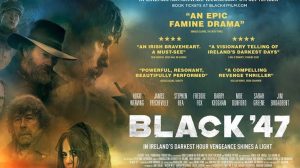The Cinematographer or Director of Photography is responsible for executing the look or visual style of a film. The look is very important, as it essentially is the painting for which the story takes place. The photography of a film evokes an atmosphere, tone, or emotion that fits a director’s vision for the movie. Needless to say, the DP has to be in constant communication with the filmmaker; who has final say over how the film should look. (Unless controlling producers get involved) This visual position demands a very astute eye in terms of conveying the right atmosphere, and ultimately telling the story in a more authentic fashion. Just like with editors, certain cinematographers tend to work again and again with the same director. If it ain’t broke…

For example, American filmmaker Wes Anderson makes movies that look and feel a particular way. The films are bright with vivid colours. The scenes tend to have a preciseness and symmetry in the pictures or frames they produce. Cinematographer Robert Yeoman is largely responsible for this. It’s evident that he understands exactly what Wes Anderson likes in terms of style and the pair have to date collaborated on seven motion pictures together.

The cinematographer is not only involved in how the film looks, but he has is responsible for executing how the camera moves too. Again with Wes Anderson pictures, the camera tends to move sideways a lot, almost like each scene is on a conveyor belt. This unique style sets Anderson apart from his peers and a large part of this effect is down to the work and execution of the cinematographer.

Some directors are very controlling to put it mildly. In this case they actually fulfill both the job of the cinematographer and director themselves. Legendary director Stanley Kubrick fits the bill here. He started his career as a photographer with Look magazine, so needless to say his expertise in the visual sense are what ultimately developed him into the famous filmmaker he would become. Kubrick did all the cinematography work on five of his movies; including his most commercial hit – The Shining. Doing two roles in one is no mean feat and slows down the production significantly, so it’s no surprise that Kubrick pictures were slow to be completed. His final film Eyes Wide Shut took nearly three years to make, and on that project he even hired cinematographer Larry Smith.
Many eventual directors started off their career in the camera department, and become cinematographers before evolving into directors themselves. Nicholas Roeg was a camera operator on Lawrence of Arabia before eventually being the man behind the camera in the creepy 1970’s hit Don’t Look Now.

Jan de Bont worked with fellow Dutch filmmaker Paul Verhoeven on Basic Instinct before going it alone to helm the blockbuster 1994 thriller; Speed, starring Keanu Reeves and Sandra Bullock.











